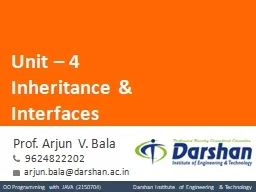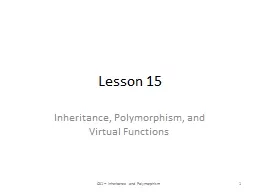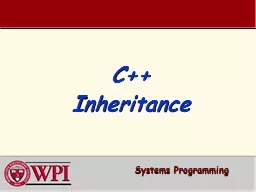PPT-Unit – 4 Inheritance & Interfaces
Author : celsa-spraggs | Published Date : 2018-12-06
Prof Arjun V Bala 9624822202 arjunbaladarshanacin OO Programming with JAVA 2150704 Darshan Institute of Engineering amp Technology Inheritance Inheritance
Presentation Embed Code
Download Presentation
Download Presentation The PPT/PDF document "Unit – 4 Inheritance & Interfaces" is the property of its rightful owner. Permission is granted to download and print the materials on this website for personal, non-commercial use only, and to display it on your personal computer provided you do not modify the materials and that you retain all copyright notices contained in the materials. By downloading content from our website, you accept the terms of this agreement.
Unit – 4 Inheritance & Interfaces: Transcript
Download Rules Of Document
"Unit – 4 Inheritance & Interfaces"The content belongs to its owner. You may download and print it for personal use, without modification, and keep all copyright notices. By downloading, you agree to these terms.
Related Documents














